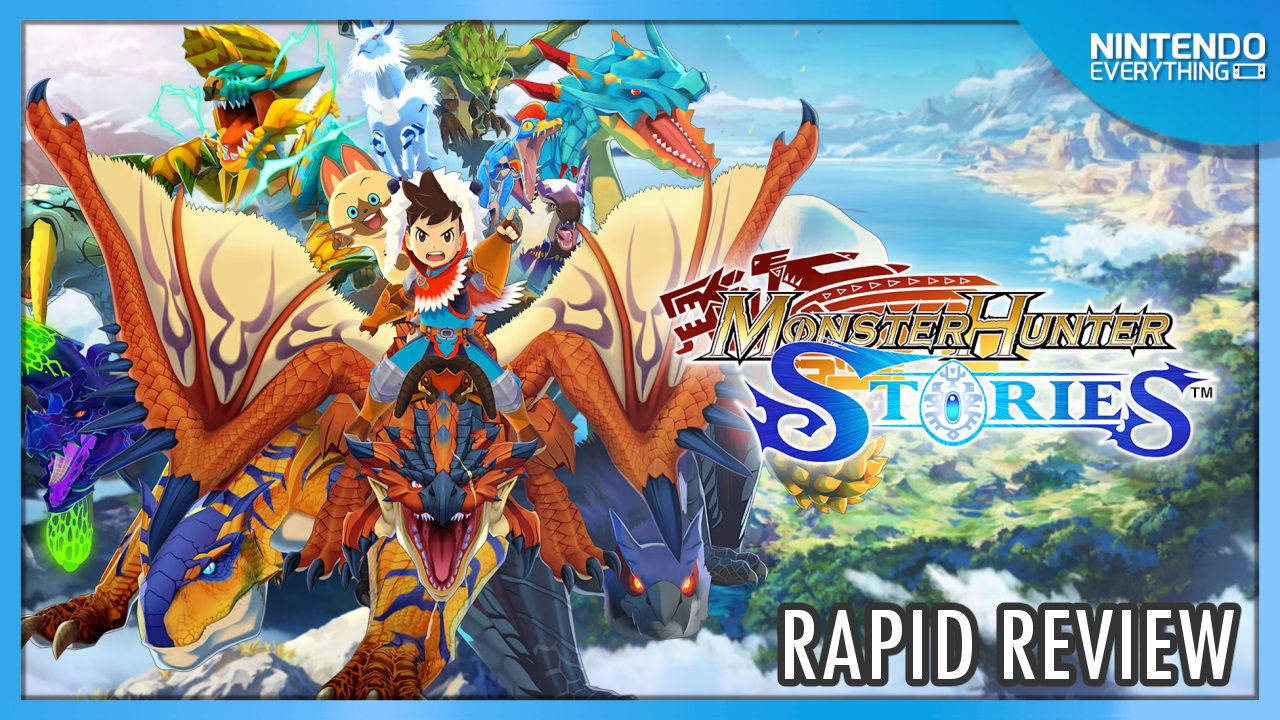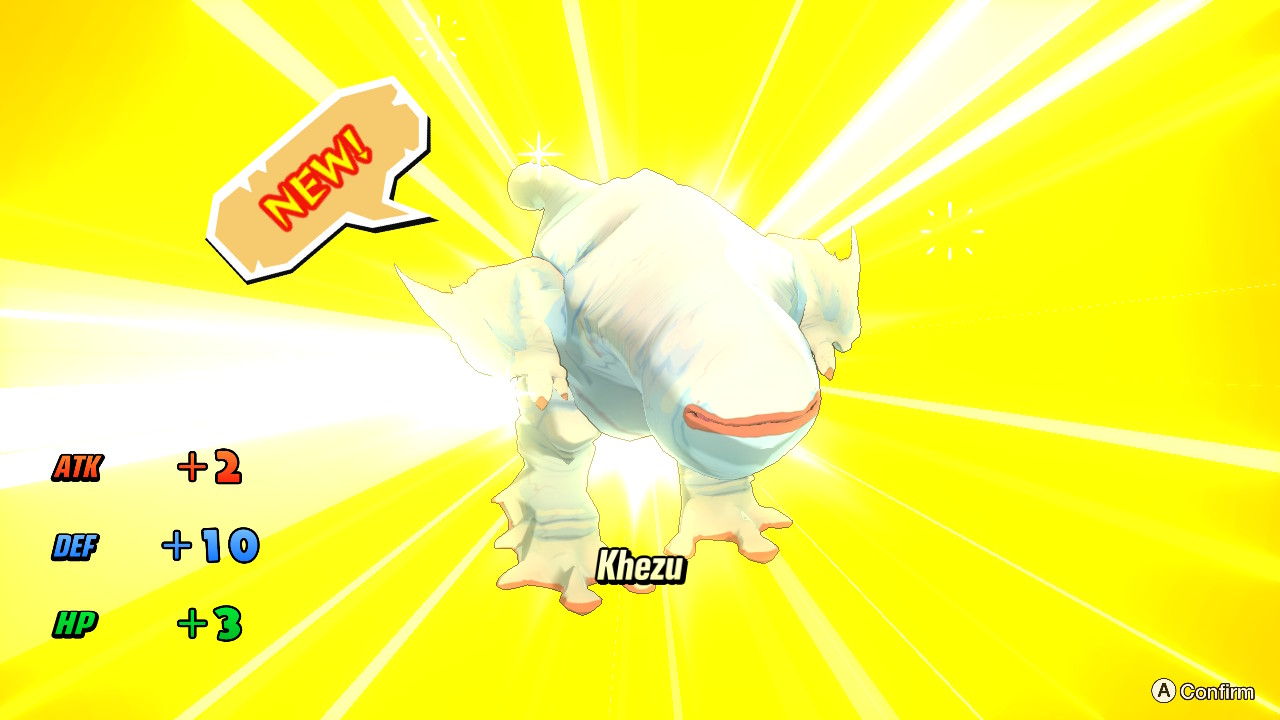
System: Switch
Release date: June 14, 2024
Developer: Capcom
Publisher: Capcom
Monster Hunter Stories was easily one of my favorite titles on the system. The franchise lent itself surprisingly well to the monster taming genre, with a solid (albeit somewhat cliche) story behind it, an accessible rock-paper-scissors style of combat, and a gene system that added an unexpected amount of depth. But it was something of a sleeper hit, and most likely didn’t experience the franchise until the sequel, Monster Hunter Stories 2: Wings of Ruin, arrived on the Switch nearly four years later. Now, just in time for the franchise’s anniversary, Capcom has finally brought the original to the Switch. But is it too little, too late?
The Switch release of Monster Hunter Stories is a mostly unaltered remaster of the 3DS original, with the few added tweaks made to its gameplay more in the way of adjustments to make it playable on Nintendo’s current generation system. Due to the absence of a second screen, the UI that appeared in combat has been shifted to the left hand side of the screen, making it slightly smaller, but it stands out clearly even on the handheld screen. Anything that involved tapping the screen is now done by hammering away at buttons, which may disappoint some who might have been hoping that Capcom would take advantage of the Switch’s touch screen to recreate these mechanics, but it is still perfectly functional and doesn’t detract from the gameplay experience.
The only UI issue I had with the game was the minimap in the right-hand corner of the screen, which has two different levels of magnification, and unfortunately the second one isn’t really large enough to feel like a significant upgrade over the first one. The option to view a full-screen map, or zoom out farther, would have been quite helpful, and made exploring the more empty-feeling maps a little more engaging. This is especially true of later areas, where the terrain is slightly more complicated, and simply following the objective markers doesn’t really give you any idea of what lies in your path to get there.

Visually the game has been given a dramatic overhaul, and although it isn’t quite on par with Wings of Ruin, the anime style of the game helps to smooth out the rougher edges and make it feel more like an element of the presentation than the result of age. There is a nice level of detail and color on the character and Monstie models in particular that makes them pop out on screen. You’ll be watching the same animations a lot, so it’s fortunate that the animations and special effects of moves are dynamic, and much crisper than they were on the 3DS. Some textures in the environment are quite low resolution when viewed up close (I noticed this with climbable vines in particular) and there are the occasional delays in animations on the map, with a slightly odd pause between gathering from the back of your Monstie and the notification pop-up of the item you received being the one you’re likely to notice the most, but the game holds a relatively stable framerate throughout.
However, the most notable element of this remaster is that all story scenes are now fully voiced, both cutscenes (which have also been given the expected visual overhaul on the rare occasions they are not rendered using in-game visuals) and static dialogue. I cannot overstate just how much this completely transforms the experience, and the quality of the voice acting is easily on par with any of the bigger budget RPGs I’ve played in recent years. The English dub is superb, with lines delivered with enthusiasm (perhaps a little too much in Navirou’s case, although this entirely in-character for him as the annoying sidekick and stand-in for the protagonist, who remains voiceless) from every character, with a nice range of accents and personality types that makes each one of them feel bursting with unique personality. For those averse to English dubs Capcom has also included Japanese voice acting, allowing you to experience the story however you choose. When combined with the visuals, Monster Hunter Stories often feels like an interactive anime, which perfectly complements the tone of the story.

Unfortunately Capcom did not opt to incorporate any of the quality-of-life features added to the gameplay in Monster Hunter Stories 2: Wings of Ruin, and although the two titles have the same underlying mechanics and Stories has held up incredibly well over the eight years since it was first release, the absence of some of the improvements to the formula that were added in the sequel can make it feel quite dated at times if you’ve played the sequel and this is your first experience with the original. The ability to move Genes to different slots during the Rite of Channeling is perhaps the biggest absent feature, making the process of building your team of Monsties a more luck-dependent process than it was in the sequel. If you plan on engaging at all with the postgame, where the difficulty spikes significantly, this is a system you’ll have to spend a lot of time with, and this added level of RNG in getting the gene in the right slot, on top of finding it in the first place, makes the process feel unnecessarily tedious by comparison. However, despite these limitations there is actually a greater level of flexibility here because you can change the element of your Monstie through gene manipulation, a feature that was actually removed in the sequel: if you want a water element Rathalos, for example, the game makes it possible, and this allows for some very interesting team compositions.
The addition of post game content that was previously only available in the Japanese release of the game also gives players who experienced the game on 3DS the first time around something new to engage with, and makes up slightly for the removal of the Legend of Zelda DLC. Although the removal of this is understandable with the game now on multiple different platforms, it’s unfortunate that it couldn’t be added to the Switch release.
The Verdict

Monster Hunter Stories has held up incredibly well over the years, and even if you’ve played the game before it’s worth experiencing again on the Switch for the voice acting alone, which adds an entirely new dynamic to the story and makes it much more entertaining. It’s unfortunate that more wasn’t done to the gameplay to bring it up to par with the sequel, but it’s hard to find fault with the work that was done to bring this title to Switch, and it remains a charming and highly accessible spinoff that should be on your radar.
Monster Hunter Stories copy provided by the publisher for the purposes of this review.
Share this:
Related